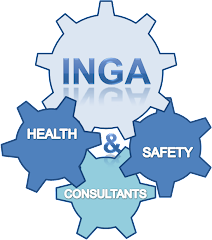One of the biggest mysteries is why well-trained people fail to follow their company’s safe work practices. Consider the following statement: “The gap between knowing and not doing is much bigger than the gap between knowing and not knowing.”
The gap between knowing and not knowing is easily overcome through training. The tough gap to overcome however is when people know something yet they fail to apply it.
It’s not hard to find examples of the “knowing-doing” gap in our workplace. Consider how many times you find people welding without suitable eye protection or failing to tie off whilst working at height. Unfortunately, the gap becomes all too real when investigating a workplace injury, where the injured failed to follow basic safe work practices that could have easily prevented the incident.
If you’ve ever been to London and used the underground rail system, you’ve no doubt heard the recorded voice loudly announcing “mind the gap” to remind embarking and disembarking passengers about the space between the platform and the train. It’s as if we need to have that same voice to remind us to mind the gap between worker’s knowledge and their actual performance.
It’s essential that leaders recognize, and then do something about, the gap. Give some thought to your own workplace, and answer the following questions:
1. What evidence is there to indicate an existing knowledge/application gap?
2. How are supervisors trained and supported to deal with situations where workers fail to apply safe work practices correctly? Bear in mind that most supervisors have risen from the ranks of the workers.
3. When last have you as an organization reviewed your safe work practices and training for relevance and interest? Outdated, impractical and dull training can lead to apathy, which in turn reduces efficiency and adds to the gap.
As you consider your own workplace and find that you have room for improvement, these four guidelines provide some steps you can take:
1. Involve a cross section of employees in a review of all current safety procedures and standards. Get their input with regard to the application of these rules.
2. Print a hard copy of your entire health and safety system. Take a highlighter and mark every instance where you find the words “shall” and “will”. These words are often misinterpreted and very loosely used in documents. The word shall means “without deviation” whereas the word will generally indicates a guideline. Ask yourself: Is it reasonably possible for workers to follow those rules that contain the word shall?
3. Does your safety manual include all the rules associated with your industry and are all employees trained in the application of these rules? Ensure that the gap between knowing and not knowing is addressed, as this gap would automatically give rise to failed application.
4. Avoid the typical desktop specialist review by creating participative review forums. Participation leads to ownership which in turn leads to acceptance and reinforced application.
Do whatever it takes to ensure that everyone knows the rules and how to apply them to their work, so you can have a workplace where everyone is mindful of the gap. This is the only way to ensure your workers can go home safely to their families.
It’s all about application - It’s that simple. One of the most important attributes of a good leader, whether a CEO or a supervisor, is to facilitate the application of appropriate knowledge.
What can you do to help others apply what they know?


